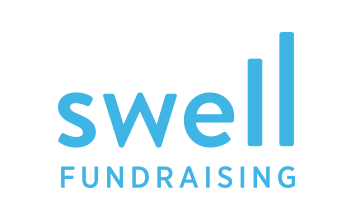Every nonprofit's heartbeat is its dedicated staff. But what happens when this heart begins to weaken due to high turnover rates?
In nonprofits, the passion for making a difference is palpable. From local grassroots organizations to expansive global charities, if that passion is kept alive, the organization is more likely to retain its dedicated staff.
However, just as in other sectors, nonprofits face challenges of staff turnover, and employee wellbeing plays a crucial role in retention. High turnover rates can hinder an organization's momentum and effectiveness. As such, the intersection of retention and wellness becomes crucial. By promoting wellness, nonprofits can reduce turnover and maintain a dedicated and engaged team, leading to long-lasting organizational wellness.
Understanding the Roots of Turnover in Nonprofits
Before delving into the solutions, it's essential to recognize the unique challenges nonprofit staff face:
Emotional Burnout
Working in a nonprofit can be emotionally taxing. Employees often deal with challenging and, at times, heartbreaking situations that can lead to compassion fatigue or burnout.
-
Depth of Connection: Many nonprofit employees are deeply connected to the causes they serve. Whether assisting marginalized populations, addressing environmental concerns, or tackling social justice issues, the work's emotional weight is immense.
-
Constant Exposure: On a daily basis, staff may witness the direct impacts of societal issues they're trying to combat, which takes an emotional toll. Over time, continued exposure to such situations and a deep personal connection can accelerate the path to burnout.
Limited Resources
Budget constraints can mean limited resources and an increased workload for the staff.
-
Stretching Budgets: Nonprofits often operate on tight budgets, which can mean doing more with less, leading staff to wear multiple hats and handle diverse tasks beyond their primary roles.
-
Resource Scarcity: Whether it's outdated technology, limited access to training, or inadequate facilities, working with limited resources can add to the daily stresses of nonprofit employees.
Insufficient Compensation
While passion can be very motivating, the often lower-than-market salaries in the nonprofit sector can influence turnover.
-
Financial Strains: While passion drives many nonprofit workers, the realities of bills, rent, and other expenses remain. Often earning less than their counterparts in the corporate sector, financial strains can lead nonprofit employees to question their long-term viability in the sector.
-
Benefits and Perks: Beyond salary, nonprofits may struggle to offer competitive benefits, further contributing to the challenges faced by their staff.
Lack of Career Advancement
Smaller nonprofits might not offer clear career progression, leading staff to seek opportunities elsewhere.
-
Smaller Organizational Structures: Many nonprofits, especially grassroots organizations, have flatter organizational structures with limited hierarchical positions, which can stifle vertical career progression.
-
Limited Training Opportunities: Budget constraints also limit opportunities for professional development, making it harder for staff to acquire new skills or qualifications that aid their career advancement within the nonprofit world.
Work-Life Imbalance
Balancing personal life with a demanding nonprofit role can often tilt the scales, leading to compromised well-being and potential burnout.
-
Extended Hours: Given the critical nature of many nonprofit missions and the urgency to make an impact, employees might find themselves working long hours or taking work home, impacting their personal lives and overall well-being.
-
High Expectations: The societal importance of nonprofit missions can translate into increased expectations for staff, both internally from leadership and externally from stakeholders. This pressure can be a constant weight, even outside typical work hours.
Understanding these nuanced challenges is crucial in formulating strategies to promote wellness and retention. The more tailored the approach to these specific issues, the more effective the solutions will ensure a motivated, satisfied, and dedicated nonprofit staff.
The Role of Wellness in Retention
Well-being is a bedrock for retention in the nonprofit world. And we're not just referring to the absence of illness or physical ailments when discussing wellness. It's a blend of mental clarity, emotional stability, and even elements of social and spiritual harmony.
When acknowledged and supported by nonprofits, this intricate matrix of well-being establishes a foundation of trust and support, which leads to enhanced staff commitment and longevity. Here's a closer look at how wellness directly influences retention:
Job Satisfaction
Employees who feel mentally sound, emotionally supported, and connected to a larger purpose will inevitably be more satisfied. Such contentment invariably translates to a more profound loyalty and a more substantial alignment with the organizational mission.
Productivity and Engagement
Staff members who are in good mental health, feel rested, and receive the necessary emotional and social support tools tend to be more productive. They bring creativity to the table and exhibit a higher level of engagement, reducing the likelihood of seeking opportunities elsewhere.
Resilience Against Burnout
With its unique challenges, the nonprofit sector can sometimes push staff to the brink of burnout. By putting into action wellness initiatives that address physical but also mental and emotional health, organizations equip their teams with resources to navigate these challenges, fostering resilience and longevity in their roles.
Strategies to Promote Wellness and Retention
Staff well-being becomes paramount in nonprofit organizations where urgency and dedication intertwine. The heart of a nonprofit's success beats through its team, making its health and motivation indispensable. A holistic strategy focusing on mental, physical, and emotional wellness ensures this dedicated team remains resilient, motivated, and deeply engaged.
Below are some strategies that combine both wellness and retention tactics, creating an environment where staff feel valued, supported, and primed for long-term commitment:
Professional Development Opportunities
Offer workshops, training sessions, and resources to help staff members develop in their current roles and careers. This provides them with a sense of growth and equips them with tools to handle job-related stresses better.
Flexible Work Schedules
Given the emotionally demanding nature of nonprofit work, flexible work hours or remote working options can provide staff with the space to recharge.
Counseling and Mental Health Support
Providing access to counseling services or mental health resources can be invaluable for nonprofit workers. Whether through an Employee Assistance Program (EAP) or partnerships with local counselors, this support can significantly mitigate burnout.
Peer Support Groups
Create spaces where employees can share their experiences, challenges, and coping strategies. Peer support can foster a sense of community and understanding, crucial for emotional wellness.
Physical Health Initiatives
While emotional and mental wellness are vital, physical health shouldn't be overlooked. Consider offering gym memberships, organizing group exercise sessions, or providing resources on nutrition and health. A sound body often leads to a sound mind, making physical wellness pivotal.
Recognize and Reward
Regularly recognizing and rewarding staff contributions can boost morale and convey the organization's appreciation. Whether through awards, shout-outs, or small tokens of appreciation, these gestures can go a long way.
Feedback Channels
Establish open channels for employees to provide feedback. By understanding their needs, concerns, and suggestions, nonprofits can make informed decisions that foster a positive work environment.
Career Pathing
If your nonprofit is larger, consider establishing clear career paths. If your organization is on the smaller side, lateral movements or role variations can offer staff new experiences and learning opportunities, even if vertical growth is limited.
The Long-Term Impact of Wellness on Retention
While the strategies above can offer immediate benefits, the long-term impact of a holistic wellness approach is profound. Investing in wellness today translates into a stronger, more resilient organization tomorrow. Organizations that prioritize their staff's well-being can expect:
-
Stronger Teams: A lower turnover rate means teams have time to gel, understand each other's strengths, and work cohesively, whether that means designing a stellar new marketing campaign or combining forces to effectively thank your donors.
-
Organizational Memory: When employees stay longer, they carry with them the knowledge, history, and nuances of the organization, ensuring continuity in projects and initiatives.
-
An Easier Time Attracting Talent: A positive, wellness-focused work environment can significantly draw potential hires, making recruitment more efficient.
Conclusion
In the nonprofit sector, where passion and purpose drive actions, prioritizing the well-being of those at the forefront is essential. By intertwining retention strategies with wellness in one comprehensive strategy, nonprofits can keep their dedicated staff and amplify the impact of their missions.
By nurturing their teams holistically, nonprofits enhance retention and fortify their capacity for meaningful change.
As you reflect on the insights shared, ask yourself: How can I begin integrating these wellness strategies within my organization? What steps can I take to prioritize the holistic well-being of my team? Can existing programs or initiatives be adapted to better align with a wellness-first approach?
Embrace these questions as a starting point, and let them guide you in formulating solutions that help you develop a more engaged, healthy, and resilient nonprofit team.
Guest Author: Conor Hughes, HR Consultant

Conor is a professionally certified consultant (SHRM-CP), Board Member, and marketer. He enjoys managing projects, creating strategies, and brainstorming ways to bring organizations to new heights. With the company in mind, he strives to serve others by building trust and relationships while guiding them through the process of growth. He seeks to use technology to empower organizations and individuals while guiding all steps of change management.
As a board member of the Westchester Human Resource Management Association, he serves as the Social Media and Marketing Chair. He helps foster collaboration and community engagement for HR professionals across Westchester, NY. Conor specializes in communication and relationship building to strengthen teams. He is passionate about workflow optimization and solution-based technology to enhance an organization's mission-driven impact.
Outside of his professional engagements, Conor can be found traveling to unique destinations to hike, camp, and explore. He loses track of time when his camera is in his hands, and he has a passion for poetry and painting. While the Hudson Valley will always be his home, he has now found himself exploring the Rocky Mountains in Denver, Colorado.




